RARE! Original 1942 Early WWII Solomon Islands Campaign Australian Aeronautical Map

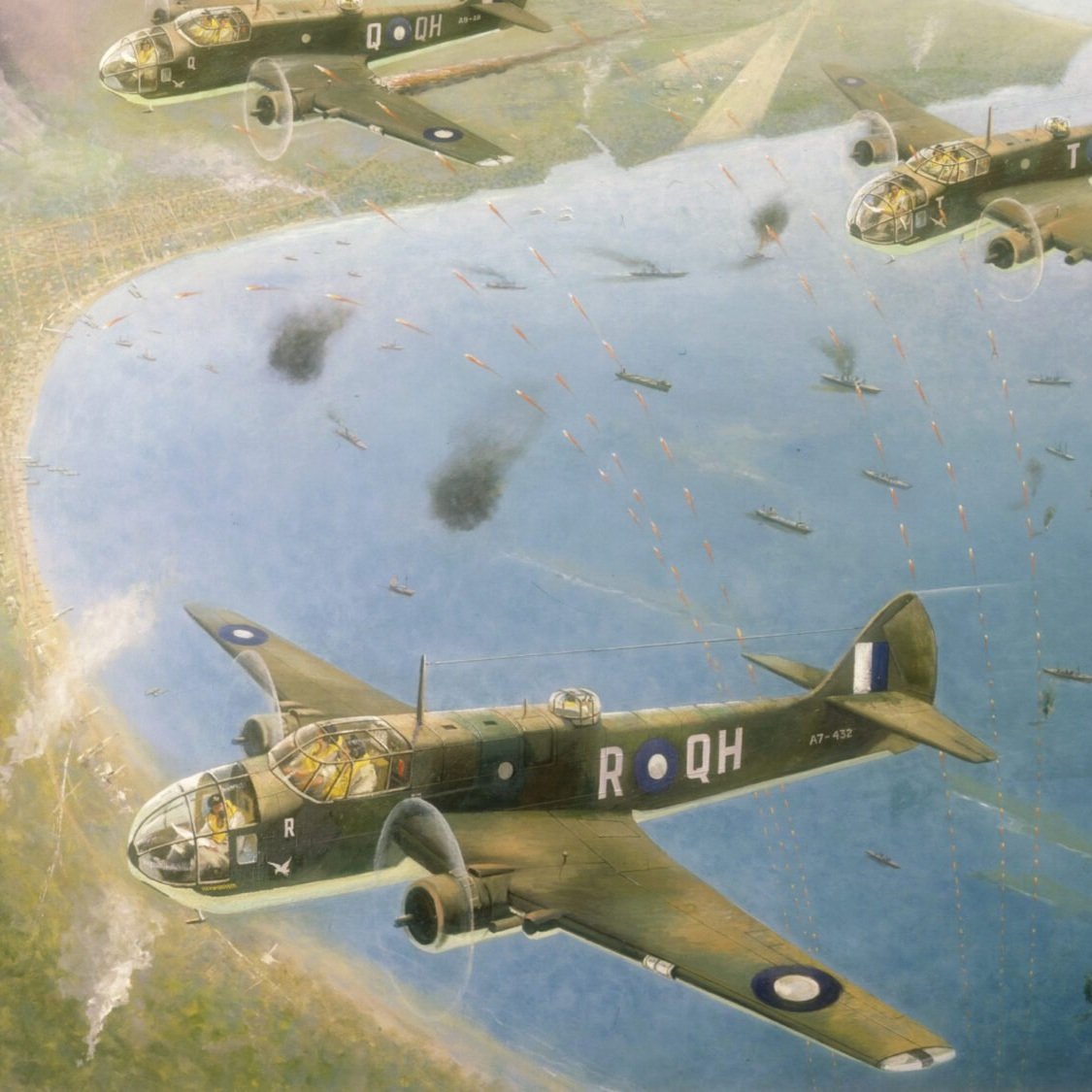
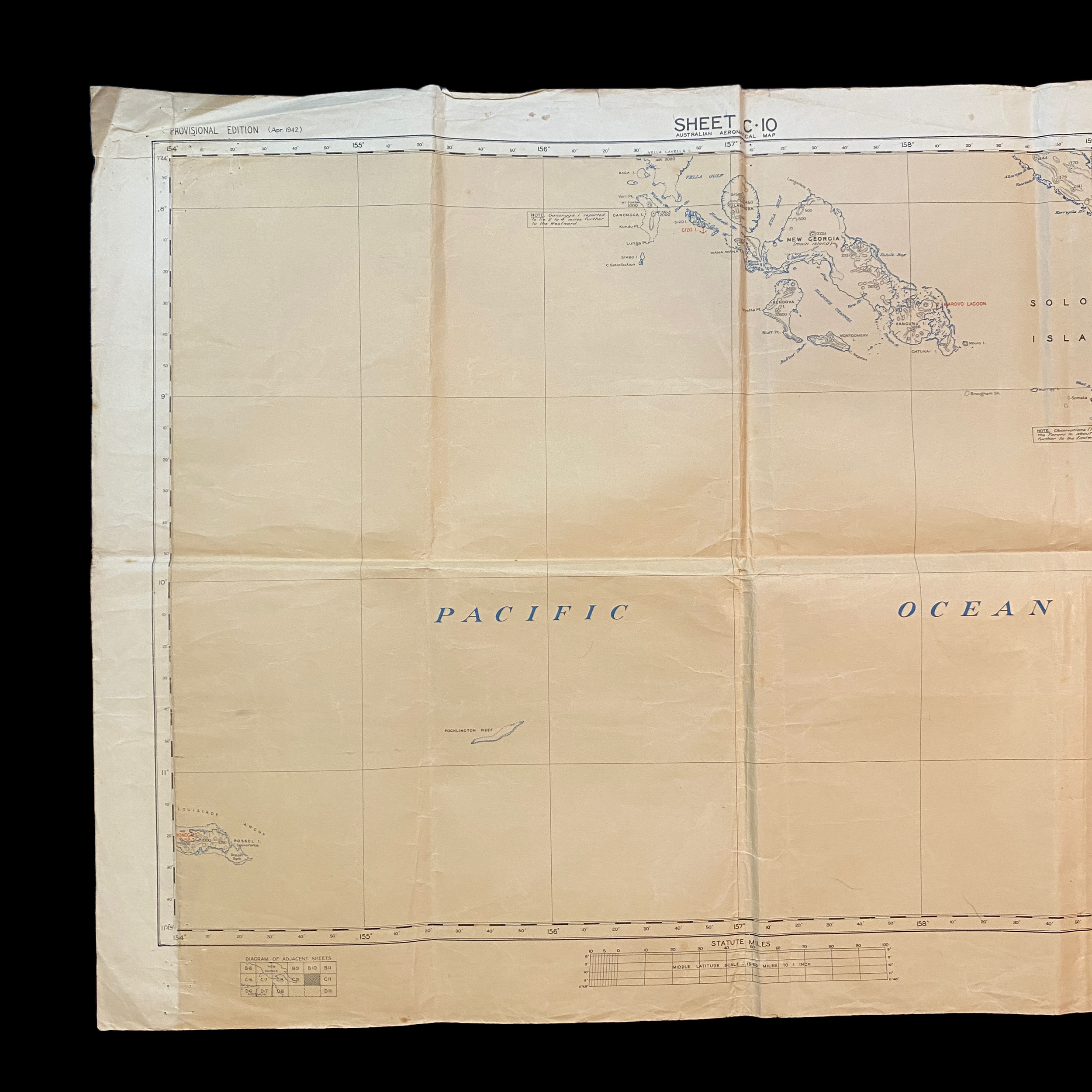
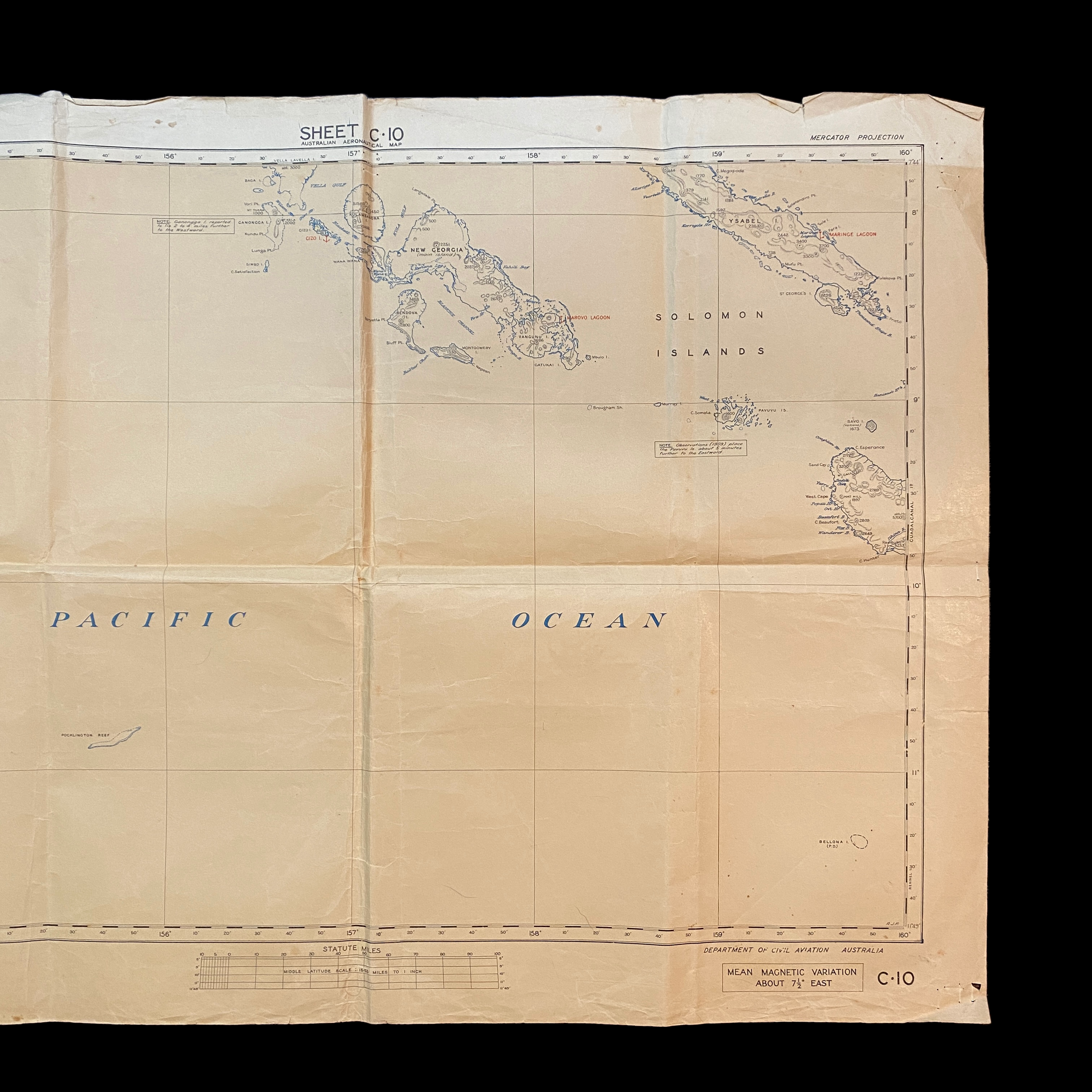

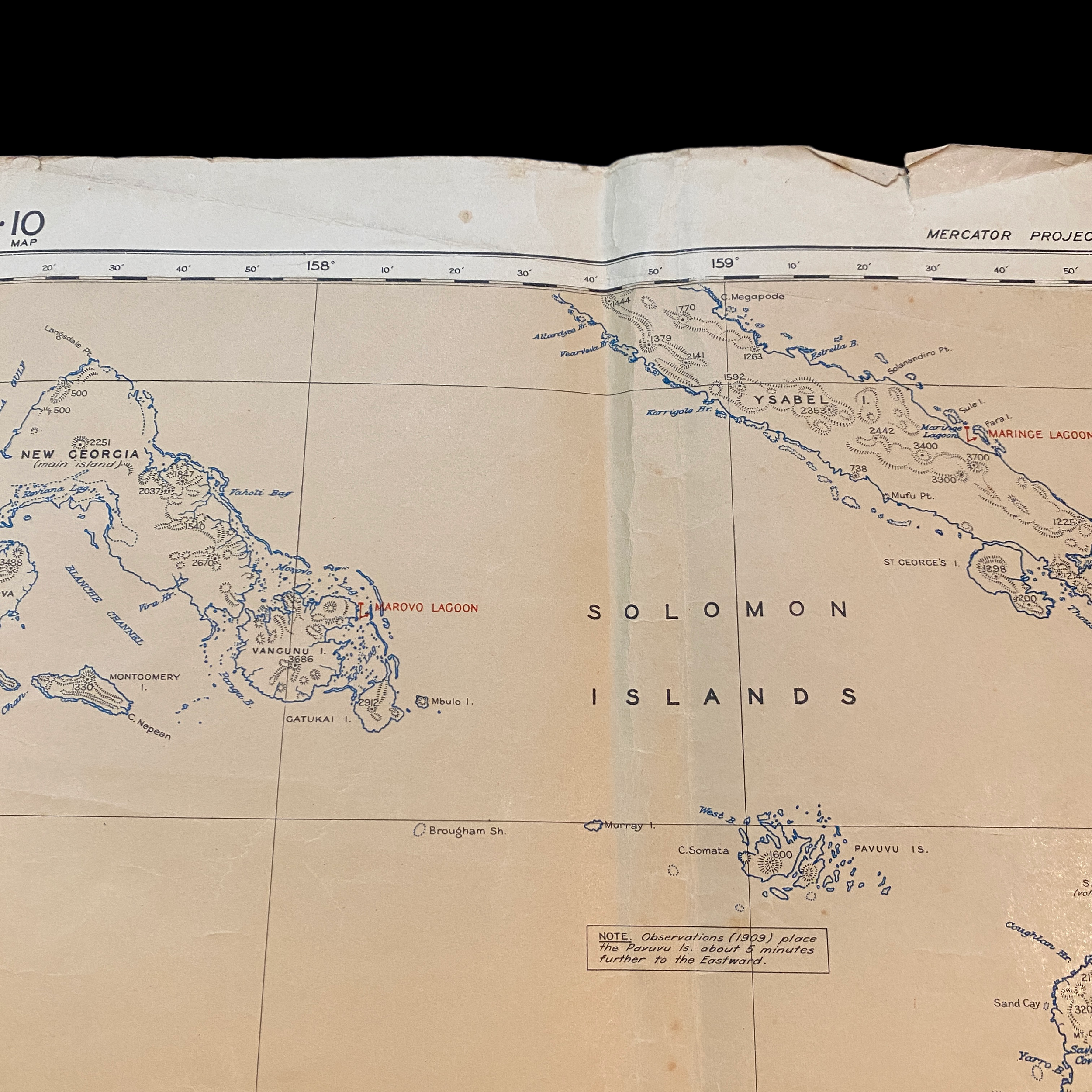
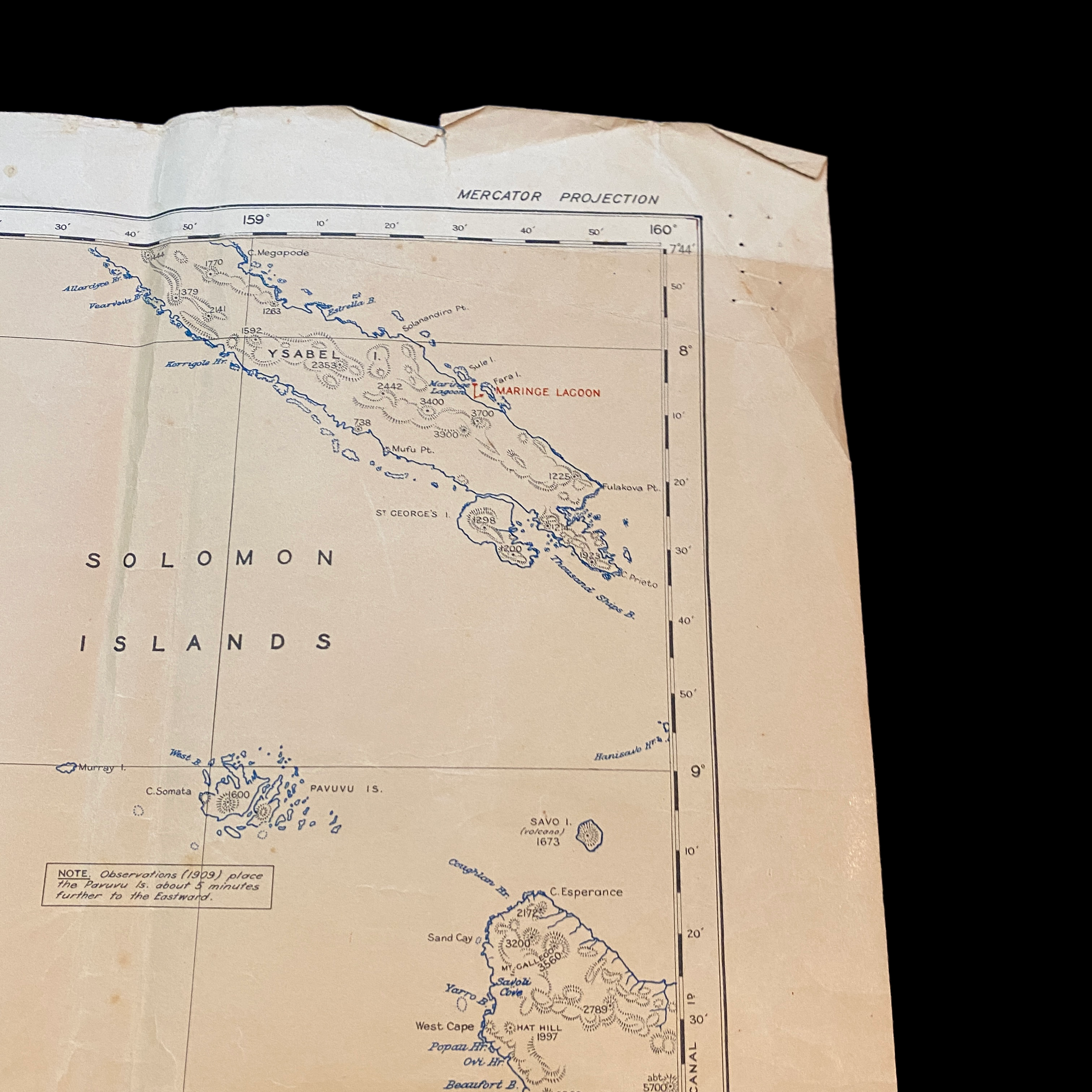
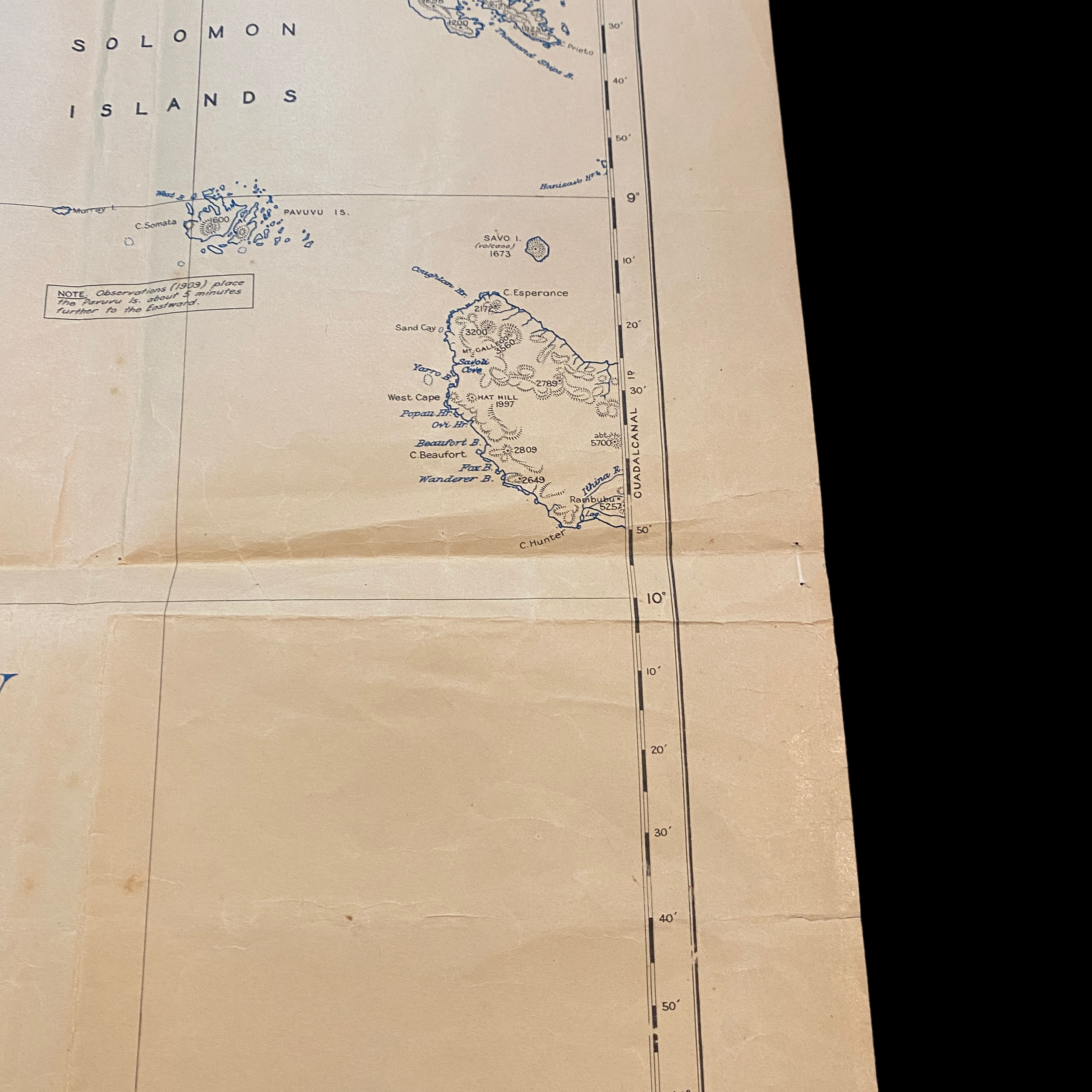
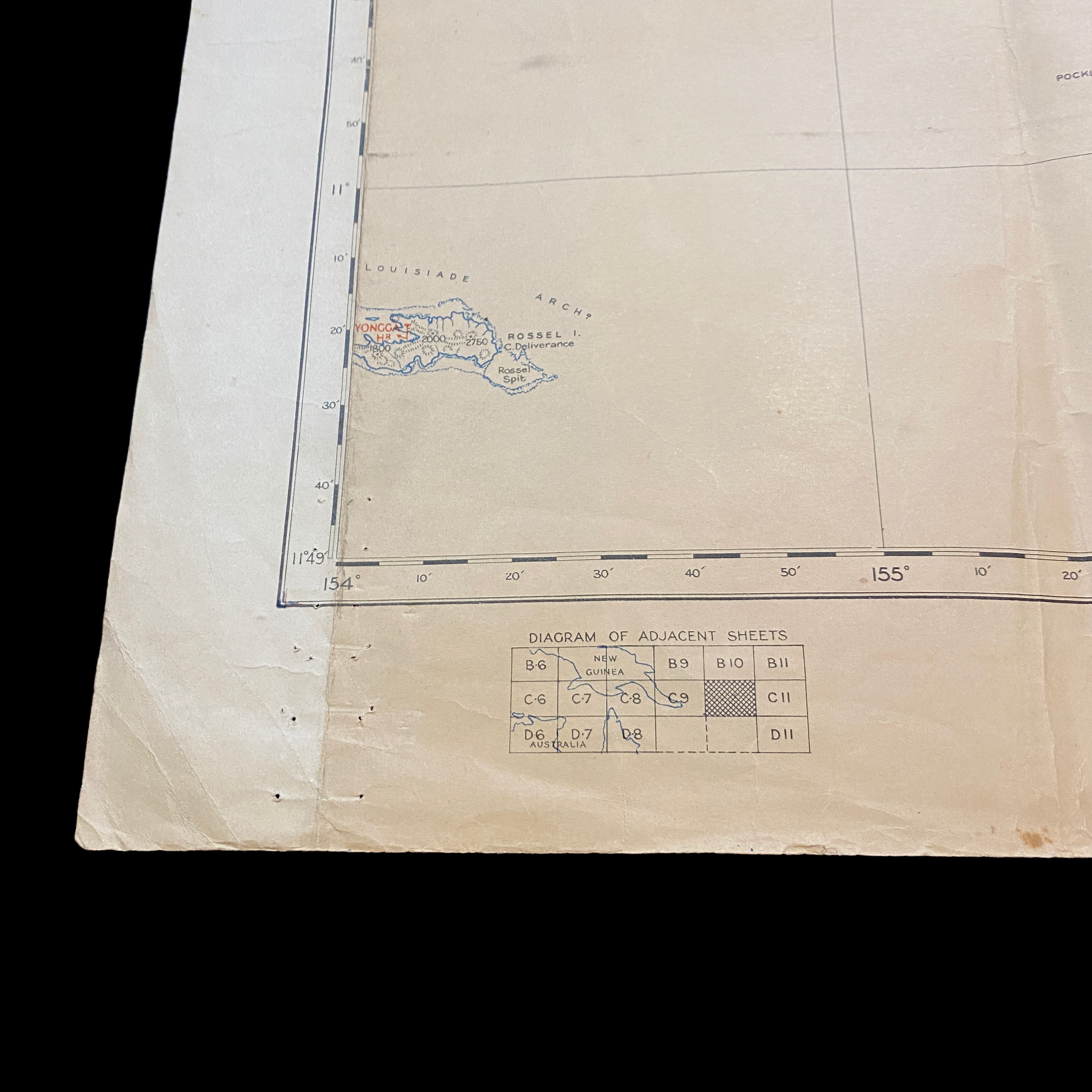
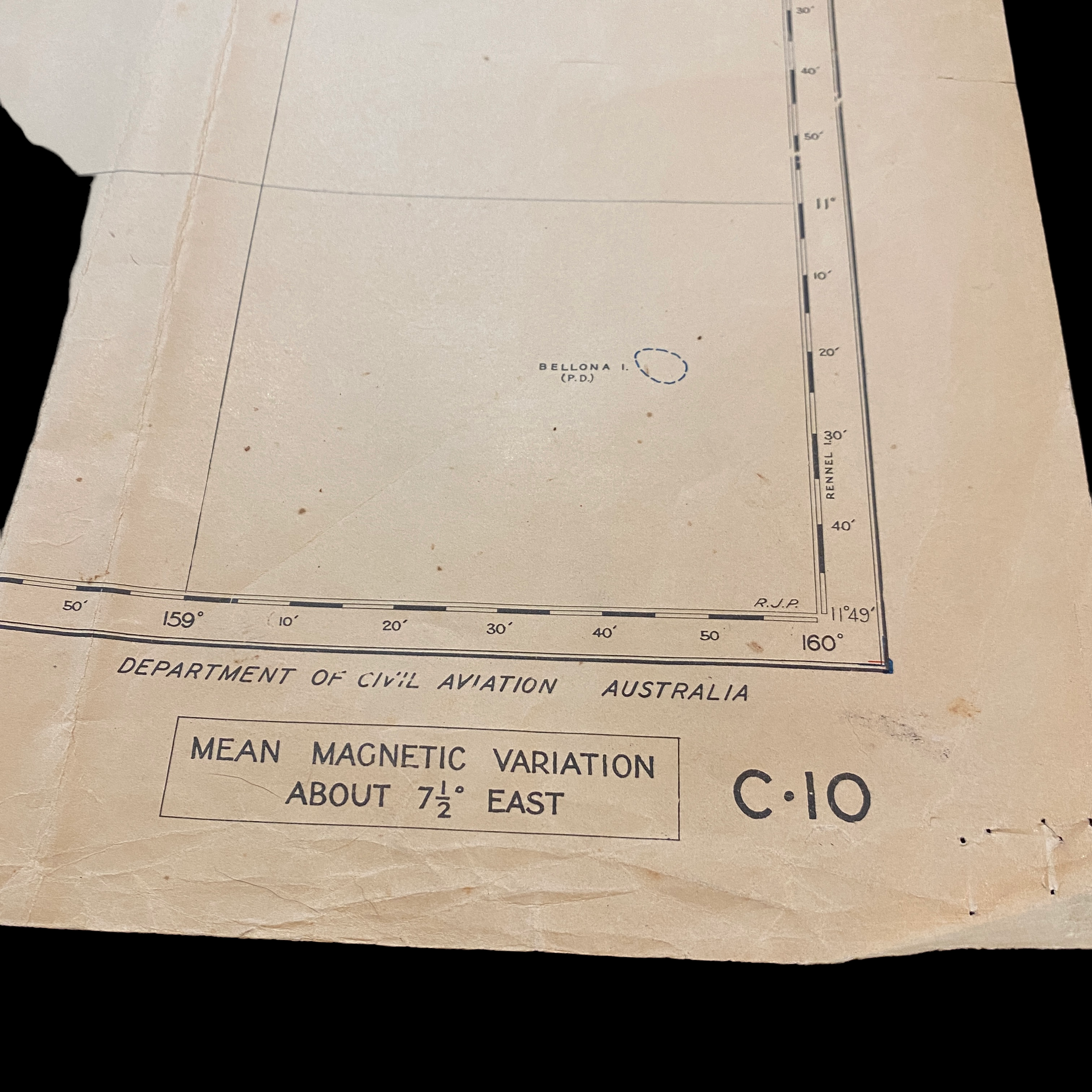

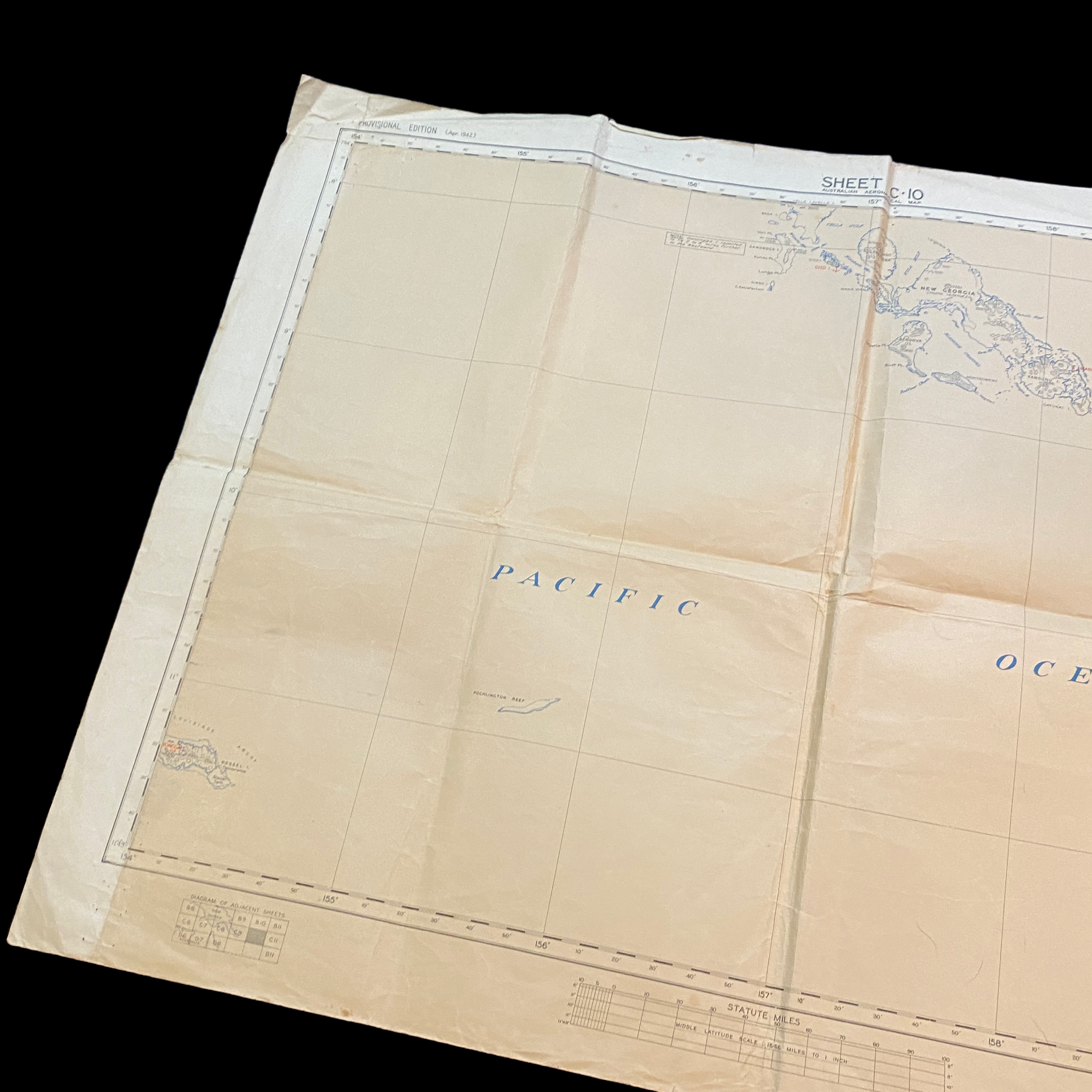




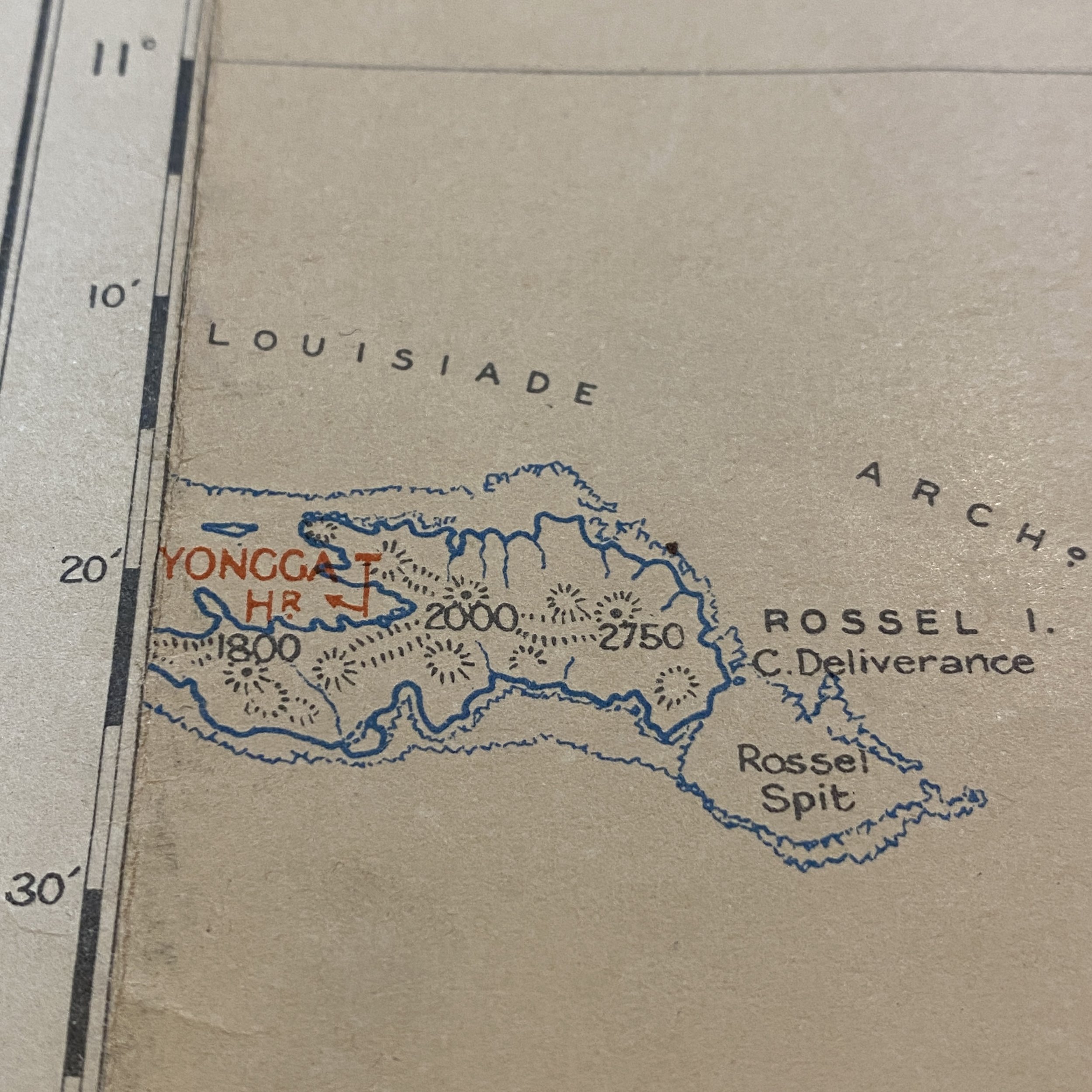
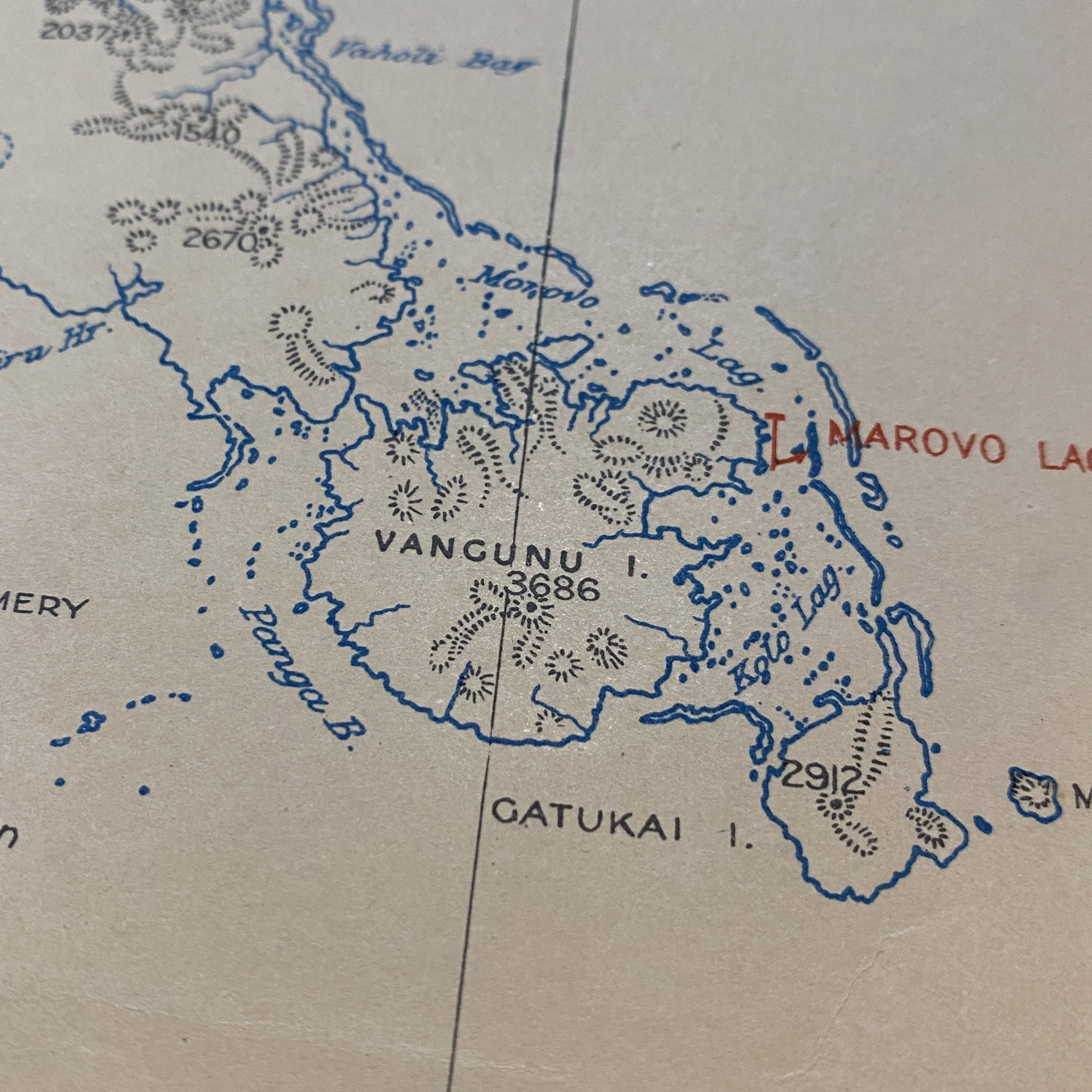

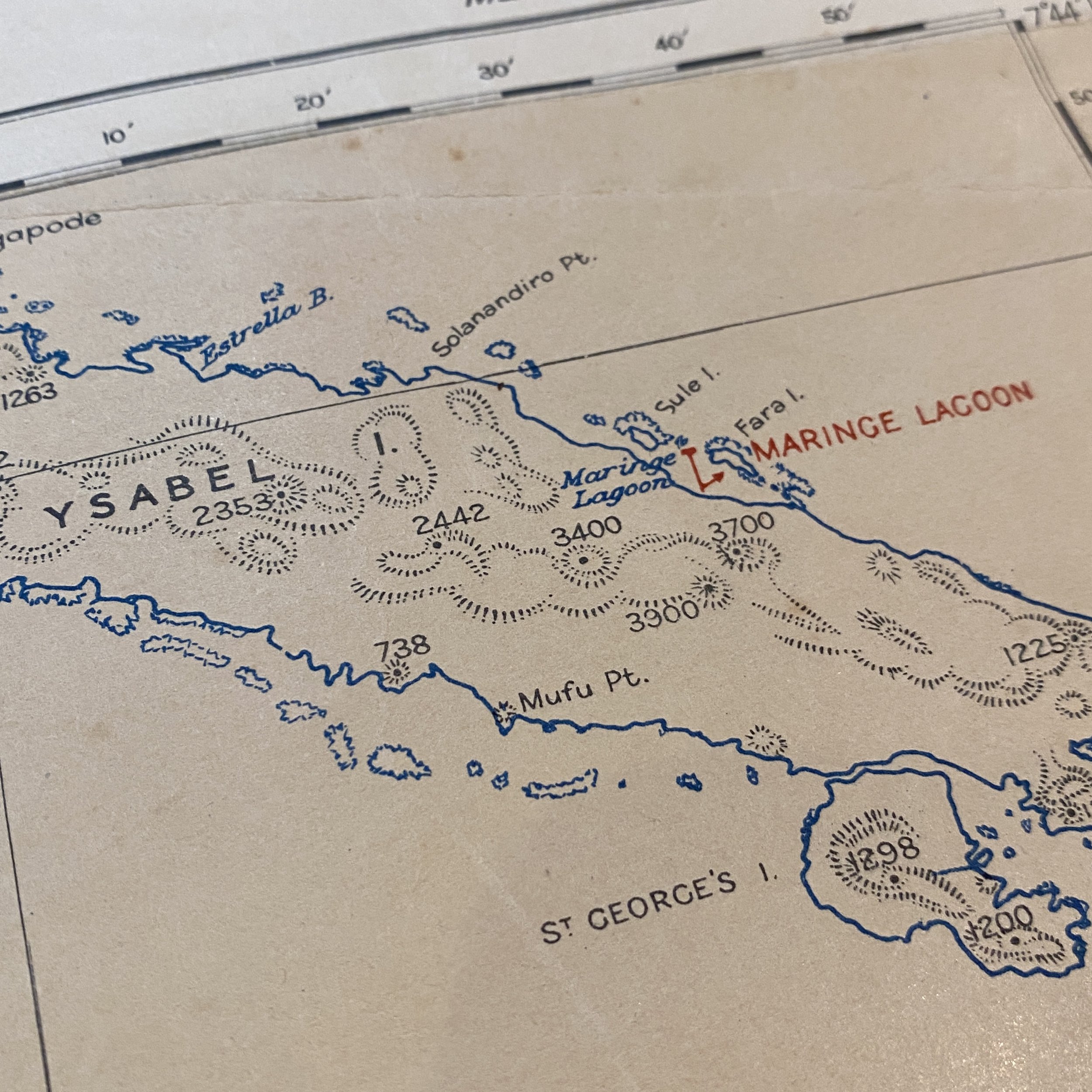


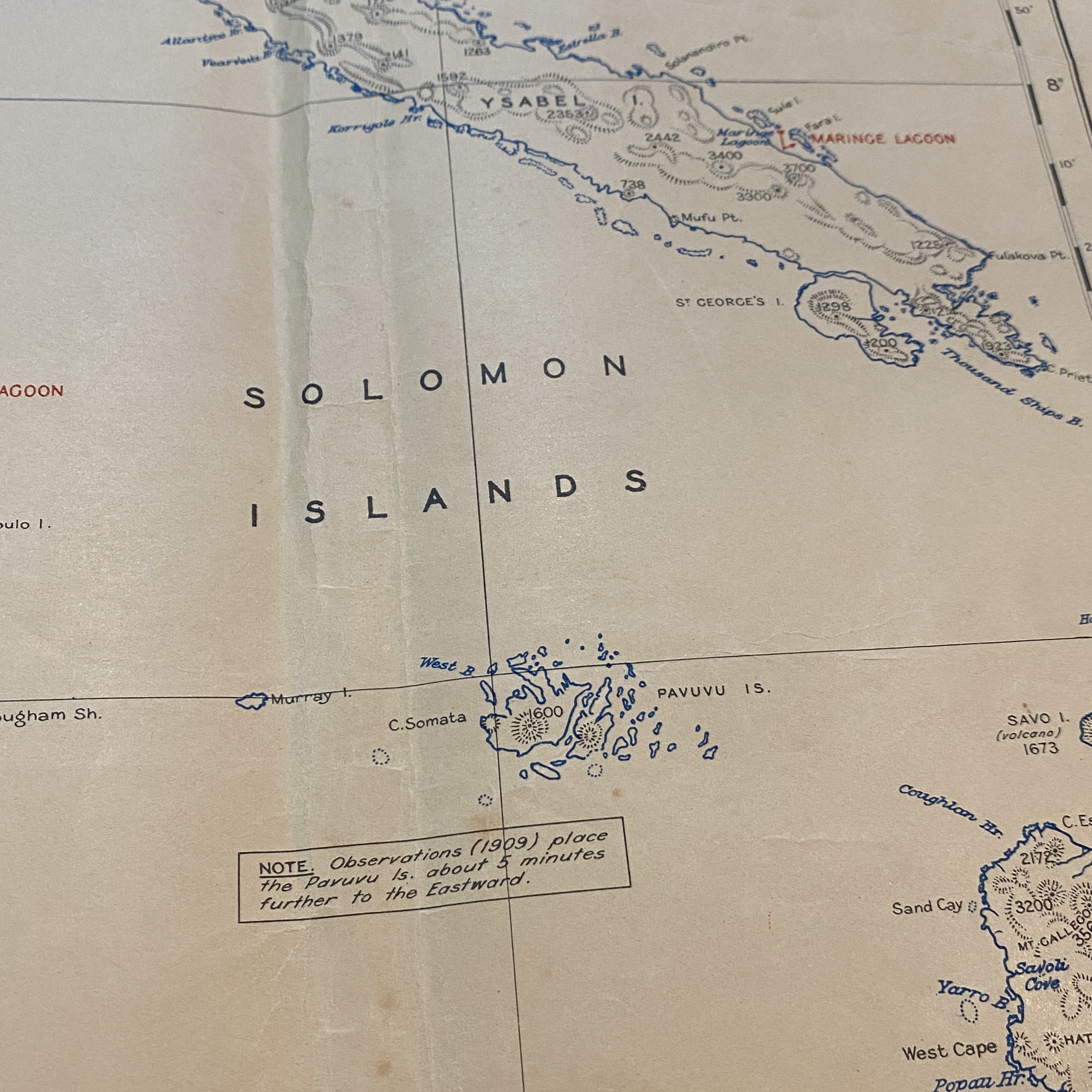

RARE! Original 1942 Early WWII Solomon Islands Campaign Australian Aeronautical Map
Comes with hand-signed C.O.A.
This incredible and museum-grade WWII map of the Solomon Islands is a very rare early April 1942 Australian aeronautical map used during the Solomon Islands Campaign in 1942. This air map shows famous battlegrounds of some of the first combat in the Pacific Theater against the Japanese including the islands of Guadalcanal, Ysabel, and New Georgia.
The Solomon Islands campaign was a major campaign of the Pacific War of World War II. The campaign began with Japanese landings and occupation of several areas in the British Solomon Islands and Bougainville, in the Territory of New Guinea, during the first six months of 1942. The Japanese occupied these locations and began the construction of several naval and air bases with the goals of protecting the flank of the Japanese offensive in New Guinea, establishing a security barrier for the major Japanese base at Rabaul on New Britain, and providing bases for interdicting supply lines between the Allied powers of the United States and Australia and New Zealand.
The Allies, to defend their communication and supply lines in the South Pacific, supported a counteroffensive in New Guinea, isolated the Japanese base at Rabaul, and counterattacked the Japanese in the Solomons with landings on Guadalcanal (see Guadalcanal campaign) and small neighboring islands on 7 August 1942. These landings initiated a series of combined-arms battles between the two adversaries, beginning with the Guadalcanal landing and continuing with several battles in the central and northern Solomons, on and around New Georgia Island, and Bougainville Island.
In a campaign of attrition fought on land, on sea, and in the air, the Allies wore the Japanese down, inflicting irreplaceable losses on Japanese military assets. The Allies retook some of the Solomon Islands (although resistance continued until the end of the war), and they also isolated and neutralized some Japanese positions, which were then bypassed. The Solomon Islands campaign then converged with the New Guinea campaign.
In April 1942, the Japanese Army and Navy together initiated Operation Mo, a joint plan to capture Port Moresby in New Guinea. Also part of the plan was a Navy operation to capture Tulagi in the southern Solomons. The objective of the operation was for the Japanese to extend their southern perimeter and to establish bases to support possible future advances to seize Nauru, Ocean Island, New Caledonia, Fiji, and Samoa and thereby cut the supply lines between Australia and the United States, with the goal of reducing or eliminating Australia as a threat to Japanese positions in the South Pacific. The Japanese Navy also proposed a future invasion of Australia, but the Army answered that it currently lacked enough troops to support such an operation.
Japanese naval forces captured Tulagi but its invasion of Port Moresby was repulsed at the Battle of the Coral Sea. Shortly thereafter, the Japanese Navy established small garrisons on the other northern and central Solomon Islands. One month later, the Japanese Combined Fleet lost four of its fleet aircraft carriers at the Battle of Midway.
The Allies countered the threats to Australia by a build-up of troops and aircraft,[5] with the aim of implementing plans to approach and reconquer the Philippines. In March 1942 Admiral Ernest King, then Commander-in Chief of the U.S. Fleet, had advocated an offense from New Hebrides through the Solomon Islands to the Bismarck Archipelago.[6] Following the victory at Midway, General Douglas MacArthur, who had taken command of the South West Pacific Area, proposed a lightning offense to retake Rabaul, which the Japanese were fortifying and using as a base of operations. The United States Navy advocated a more gradual approach from New Guinea and up the Solomon Island chain. These competing proposals were resolved by Admiral King and U.S. Army Chief of Staff General George C. Marshall, who adopted a three-task plan. Task One was the capture of the island of Tulagi in the Solomons. Task Two was an advance along the New Guinea coast. Task Three was the capture of Rabaul. Task One, implemented by a directive of the Joint Chiefs of Staff on 2 July 1942 and named the initial attacks Operation Watchtower, became the Solomon Islands campaign.
On 7 August 1942 U.S. Marines landed on Guadalcanal, beginning the Guadalcanal Campaign. The Allies created a combined air formation, the Cactus Air Force, establishing air superiority during daylight hours. The Japanese then resorted to nightly resupply missions which they called "Rat Transportation" (and the Allies called "the Tokyo Express") through New Georgia Sound (a.k.a. "The Slot"). Many pitched battles were fought trying to stop Japanese supplies from getting through. So many ships were lost by both sides during the Guadalcanal campaign that the southern end of New Georgia Sound, the area north of Guadalcanal previously called Savo Sound, became known as "Ironbottom Sound".
Allied success in the Solomon Islands campaign prevented the Japanese from cutting Australia and New Zealand off from the United States. Operation Cartwheel — the Allied grand strategy for the Solomons and New Guinea campaigns — launched on June 30, 1943, isolated and neutralized Rabaul and destroyed much of Japan's sea and air supremacy. This opened the way for Allied forces to recapture the Philippines and cut off Japan from its crucial resource areas in the Netherlands East Indies.
The Solomons campaign culminated in the often bitter fighting of the Bougainville campaign, which continued until the end of the war.